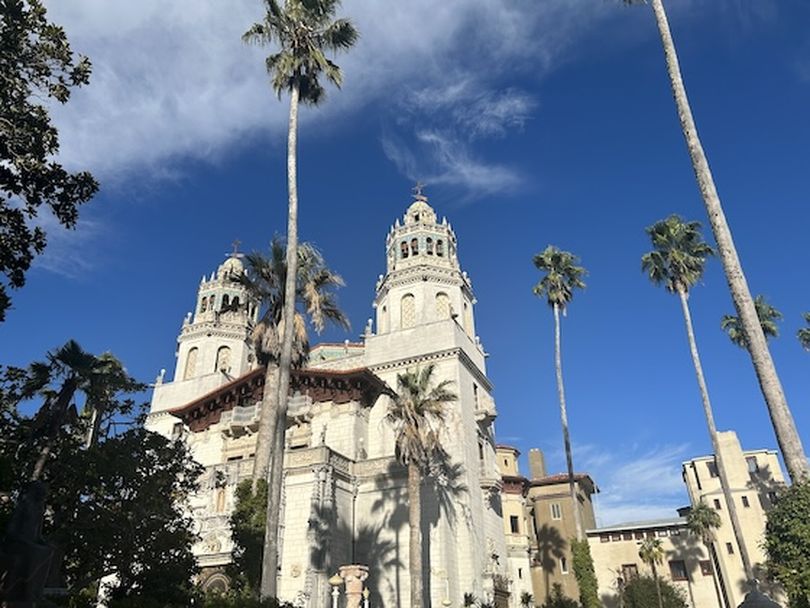To the rich, home is where the big house is

Anyone who recognizes the name Robin Leach knows all about the lives of the rich and famous.
They know, too, that it sometimes seems as if living areas can’t be big enough for those who have vast sums of money at their disposal.
Yes, some of the houses that get regular mention in magazines and TV shows are works of art. The various houses that Frank Lloyd Wright designed for his rich clients are good examples.
Some others, though, have outlived their era of fashion A few years ago my family and I visited the 70-room Vanderbilt estate – called The Breakers – in Newport, R.I. A symbol of the so-called Gilded Age, it’s symbolic of 19th-century excess. Still, the architect Richard Morris Hunt made sure The Breakers was built to last.
And if nothing else, it’s likely to endure longer than the 66,000-square-foot mansion that Bill Gates had constructed overlooking Lake Washington.
As with everything else, taste in housing depends on personal preferences. And last week my wife Mary Pat Treuthart and I had the opportunity to explore a couple of intriguing examples.
We flew to San Jose enroute to spending a long weekend on California’s central coast. We stayed two nights in Carmel and another two nights in Cambria, and we did some of the usual touristy things. For one, we drove the 17-mile-drive on the Monterey Peninsula, passing by the Pacific Ocean on one side and all the golfers playing the famous Pebble Beach course on the other (at a cool $595 a head).
And in Cambria, we enjoyed watching the sun set while walking along the wooden boardwalk that fronts Moonstone Beach Drive.
But since I began this blog post by talking about oversize living areas, I should add that one of the main reasons for going to Cambria was to visit Hearst Castle. Sitting just less that 10 miles from Cambria, the still-unfinished estate was co-designed by the media magnate William Randolph Hearst and the architect Julia Morgan.
Hearst, of course, was the newspaper publisher and sometime politician who famously was satirized in Orson Welles’ 1941 film “Citizen Kane.” The Xanadu estate owned by Charles Foster Kane (played by director and co-screenwriter Welles) is somewhat similar to what Hearst built, though it has a far darker feel to it – which Gregg Toland’s black-and-white cinematography emphasized.
Hearst Castle – or the Hearst San Simeon State Historical Monument, as it is known – is, as the California state website claims, “a magnificent 115-room main house plus guesthouses, pools, and 8 acres of cultivated gardens.” Visitors have three options for tours, which is the only way you can visit. We opted for the Grand Rooms Tour, which took us through the main living salon, the dining room, billiards parlor and various other areas.
Mary Pat was most impressed with the two pools, the spectacular outdoor Neptune Pool but particularly the indoor Roman Pool, which is “lined with mosaics in Venetian glass and gold leaf.” The movie that we saw before our tour, “Hearst Castle – Building the Dream,” gives much of the background – as well as crediting Morgan for her part in the project.
On our way back to San Jose, following the directions in the Burt Bachrach song, we stopped at another grand mansion. This one, though, was far less worldly – and far stranger – than what Hearst wrought. It’s called the Winchester Mystery House.
You may know of the house because of the 2018 movie “Winchester,” which stars Helen Mirren as Sarah Winchester, the widow of the famous gunmaker William Winchester. It was she who, attracted by (and fearful of) the paranormal, built the house with the following dimensions: 24,000 square feet, 10,000 windows, 2,000 doors, 160 rooms, 52 skylights, 47 stairways and fireplaces, 17 chimneys, 13 bathrooms and six kitchens.
Sarah Winchester died in 1922, having added to the house continuously since she’d bought the property in 1886. The house became a tourist attraction after her death, and these days – as evidenced by the movie – much is made of Winchester’s supposed fear that her house was haunted. The tour guide we had, who – sweet as she was – reminded me of a middle-schooler auditioning for a musical production of “Beetlejuice,” kept warning us to be on the outlook for the spooks who were said to be seen walking the grounds at all hours.
Not that any appeared. We did, though, see a lot of stained-glass windows, works of art throughout, a number of stairwells that went nowhere, doors that opened onto brick walls and the various light fixtures that boasted 13 – count them, 13 – bulbs. Winchester apparently enjoyed her superstitions.
Sitting later in the San Jose airport, waiting for our flight to Seattle (and then home), I wondered about both mansions and the intentions of their designer-owners. And I wondered what I might do if I had access to more money than I could spend in a lifetime. Would I, too, want to build a monstrously huge castle?
Probably not. After all, as I wrote in a previous post, I’m perfectly comfortable sleeping in a yurt.
Just as long as it has a working flush toilet.
